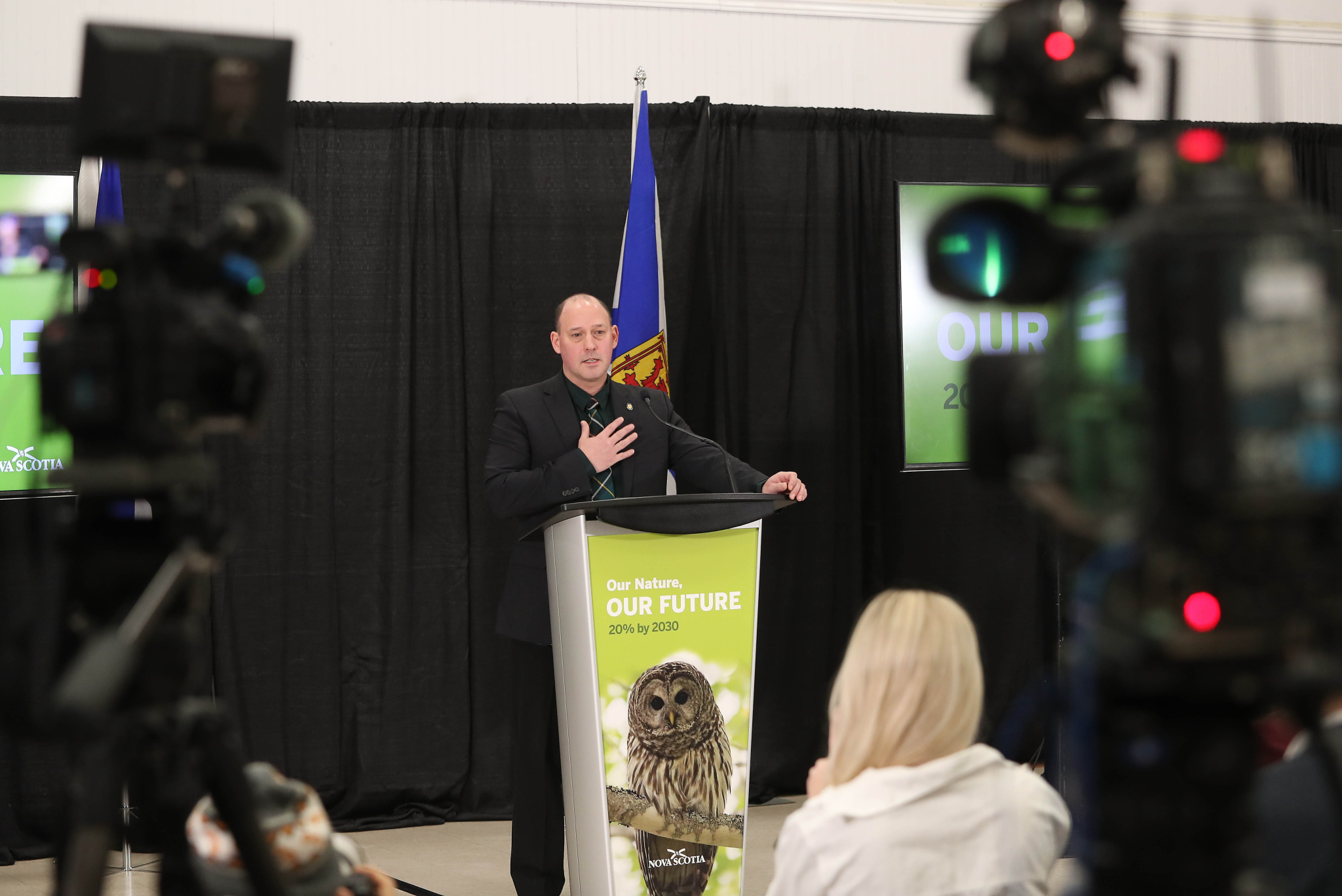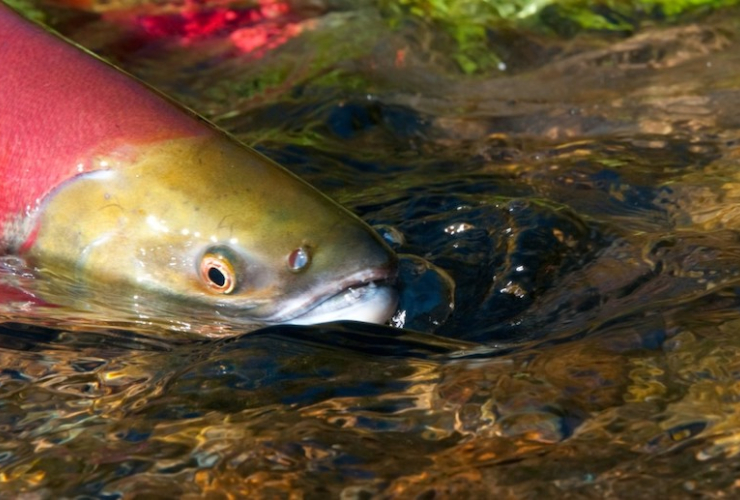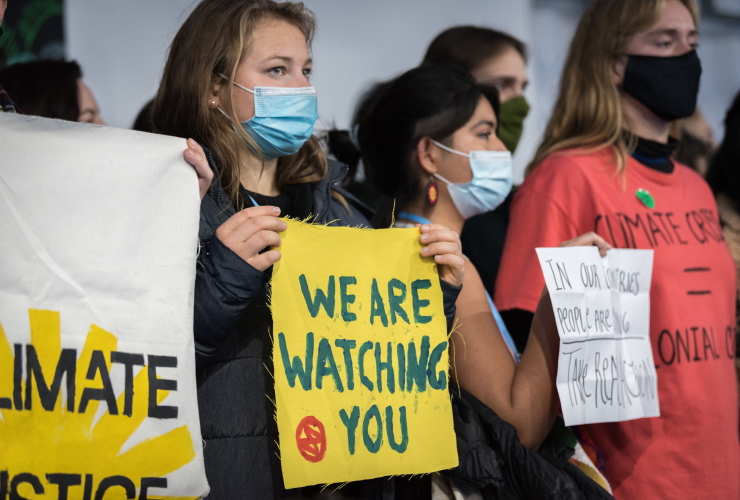On Monday, Nova Scotia joined other provinces across Canada in announcing new conservation investments during this year’s United Nations biodiversity conference, COP15.
Provincial Environment and Climate Change Minister Timothy Halman said Nova Scotia would put $20 million forward to protect land and water in the province and designate 9,300 hectares of Crown land as protected. This will bring protected land in the province to 13 per cent.
Being held in Montreal until Dec. 15, COP15 is setting worldwide targets and goals to halt and reverse the loss of biodiversity. In Canada, over 1,200 species are listed under the federal Species at Risk Act, and specific ecosystems in the country have seen significant declines — wetlands in about 70 per cent of southern Canada have been destroyed or degraded from development, according to Ducks Unlimited Canada.
Canada has a federal goal of protecting 30 per cent of its lands and waters by 2030, which both Quebec and British Columbia have matched. Nova Scotia has said it will protect 20 per cent of its lands and waters by the same year.
According to the Nova Scotia government, 800 hectares of mature forests, wetlands, lakes and waterways will be protected, including the Sackville River and the Pockwock watershed. Any money left over will go to the Nova Scotia Crown Share Land Legacy Trust, “which helps private land conservation organizations with the cost of acquiring and protecting private land,” said the province’s release.
“I can’t breathe, I’m so excited! After working on this for over eight years, I’m jumping for joy just like the salmon in the Sackville River — 800 hectares saved for the people of Nova Scotia in Upper Sackville’s first wilderness area,” said Walter Regan, past-president of the Sackville Rivers Association.
In B.C.’s conservation announcement last week, Premier David Eby tasked Water, Land and Resource Stewardship Minister Nathan Cullen with supporting new Indigenous Protected and Conserved Areas (IPCAs), which are areas that Indigenous laws, governance and knowledge systems have the primary role in managing.
While Indigenous people make up five per cent of the world’s population, they protect 80 per cent of the world’s remaining biodiversity, making their involvement vital in Canada’s conservation goals. Meanwhile, at a COP15 panel last week, Indigenous leaders from Indonesia, the Democratic Republic of Congo, Brazil and Canada, called out the conference for excluding sovereign Indigenous nations from negotiations.
Included in Quebec’s announcement from Dec. 6 was $650 million over seven years to support IPCAs, protect endangered species and purchase land for conservation.
Nova Scotia’s first IPCA was recently established by the Unama’ki Institute of Natural Resources on behalf of the 5 Mi’kmaw communities they serve. The Kluskap Cave IPCA contains a number of sacred sites and includes terrestrial, island, and marine habitats. The Assembly of Nova Scotia Mi'kmaw Chiefs has established a land trust called the Sespite'tmnej Kmitkinu Conservancy to allow Mi’kmaq to hold private lands for future generations and is also part of the IPCA Project in Nova Scotia.
Halman said the ultimate goal of 20 per cent conservation “will also include areas of importance identified by Mi’kmaq communities.”
“... I hope to be able to join the Mi’kmaq of Nova Scotia soon to share how we are working together on Indigenous Protected and Conserved Areas in Nova Scotia,” he said.
Updates and corrections
| Corrections policyThis article was updated to include information on the Kluskap Cave IPCA.
Sometimes I wonder what it is
Sometimes I wonder what it is that people just don't get.
I would hope that, as a very first step, "protected" would be defined.
In Toronto, "protected" park land (conservation areas) can now be farmed.
Provincial and national parks are turned into convention centres and "tourism" establishments (hotels and businesses). National parks here and in the US can be logged, mined, and hunted.
None of that protects biodiversity.
Montreal is converting a parking lot to parkland. That's better than nothing, but surely the name of the game is *preserving* what's already been destroyed isn't much help to biodiversity. Tree plantations (intended to be logged off again) aren't forests, and don't support biodiversity.
Just as marine "protected areas" don't support biodiversity when drilling for oil goes on all around its borders.
Instead of everybody piling on with all the "good" they're going to do, with all the current activities more or less intact, what is needed is definitions.
Starting with what "abated" coal/oil/gas means.






Comments